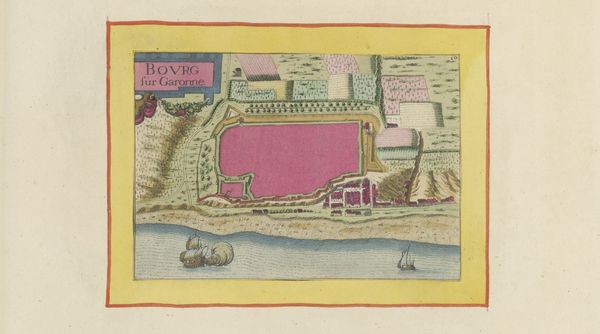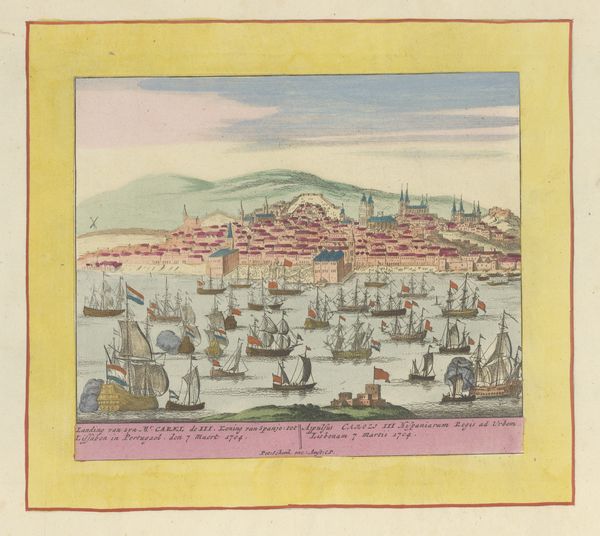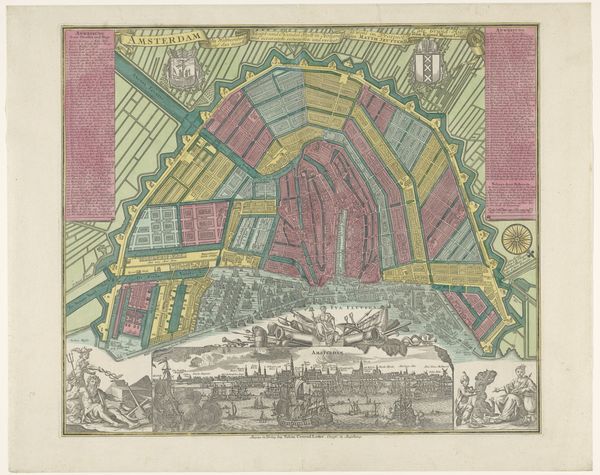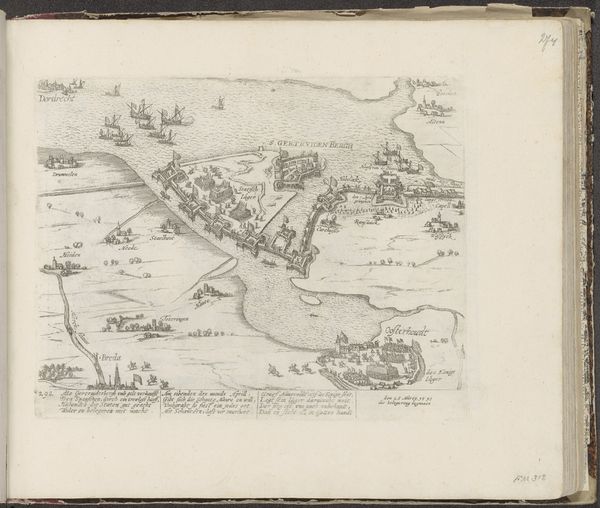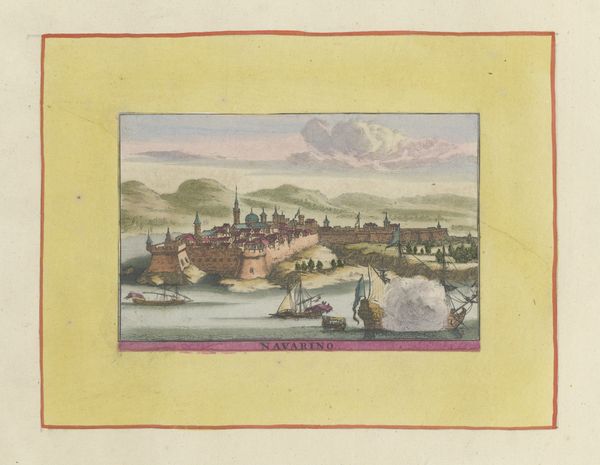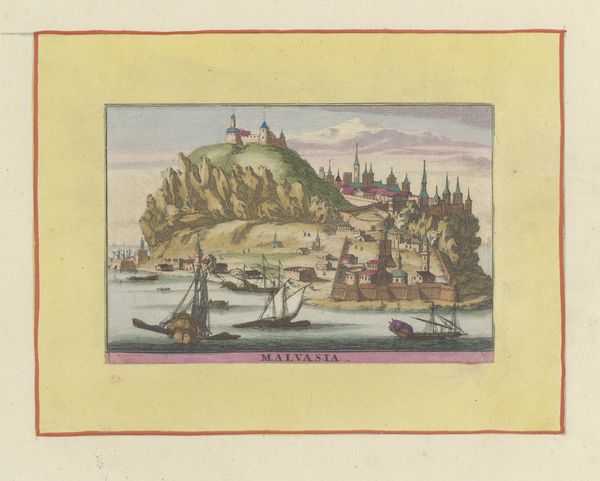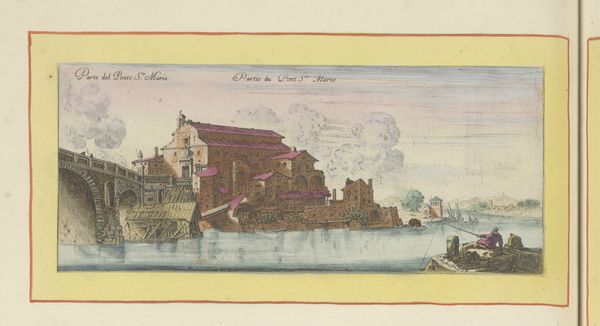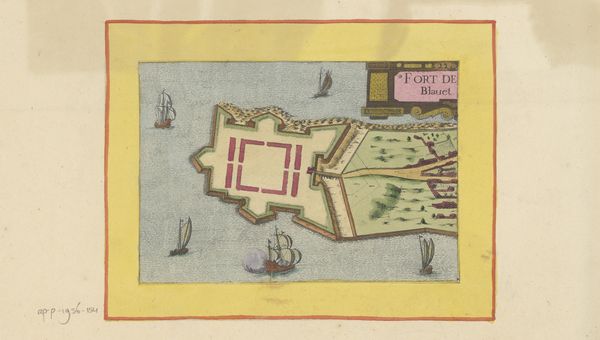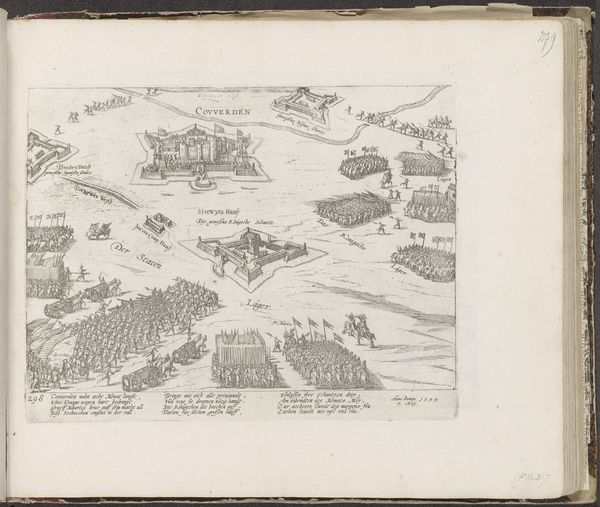
painting, print, engraving
#
water colours
#
ink paper printed
#
painting
# print
#
landscape
#
cityscape
#
watercolour illustration
#
history-painting
#
engraving
Dimensions: height 153 mm, width 191 mm
Copyright: Rijks Museum: Open Domain
Editor: So, this print is titled "Siege of Barcelona, 1706" by Pieter Schenk, created sometime between 1707 and 1720. It's an engraving, and it's currently held at the Rijksmuseum. Looking at it, the use of color feels… almost celebratory despite depicting a siege. What stands out to you when you look at it? Curator: The scene immediately evokes a sense of conflict but rendered with such precision and symbolic intention. Notice the city rendered in a vibrant almost blood red color contrasting with the surrounding landscape. Editor: Yes! It almost feels… deliberately theatrical. The red is striking. What could that represent? Curator: The use of red can symbolize many things, from bravery and sacrifice to danger and violence. In this context, given it depicts a siege, I would interpret the red as both a representation of the violence but also Barcelona's will to fight, the passion that fuels resistance, almost like a bleeding heart. Editor: So the city itself becomes a symbol of resistance. Fascinating. Curator: Exactly. The ships too, note how they frame the composition, a sign that the city is enclosed. They appear ready and able and willing to destroy. These symbolic choices speak volumes about how people wished to memorialize conflicts. Do you think this way of documenting reality can tell a different story from written records? Editor: Definitely. A picture tells a thousand words, as they say! Curator: Indeed. By understanding how certain symbols or images resonate throughout different eras, we can develop a richer understanding of cultural memory and its impact on a collective awareness. I find this type of memory fascinating, especially how this image would influence public understanding. Editor: That’s such a great point. Looking at the image, and discussing the context surrounding it really highlights the power an image can have.
Comments
No comments
Be the first to comment and join the conversation on the ultimate creative platform.
